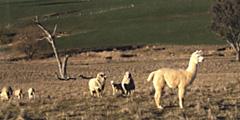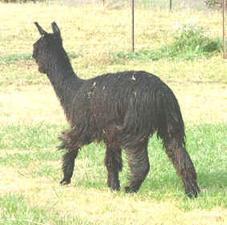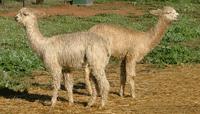Alpaca Basics
Where Do Alpacas Come From?
Alpacas are native to the high altitude areas of South America – Peru, Chile, Bolivia and Argentina - where the temperatures can be blisteringly hot during the day and freezing at night.

Suri & Huacaya - What's the Difference?
Both alpaca are anatomically the same with the only difference being the fleece.
The Suri Alpaca were treasured by Inca Rulers and the wearing of the suri fibre was reserved exclusively for their use. Since then, suris have survived in the hands of a few in the more remote areas of Peru.
The Suri fleece grows in long pencil like locks similar to dreadlocks which hang straight down from their body. Suri fleece has more luster and a much silkier feel than that of the Huacaya and is synonymous with luxury to those lucky few who have known its qualities. Demand for the unique suri fibre is growing world wide with the top fashion houses and designers of Europe using this stunning silky fibre. They rate it as one of the best fibres of the world. When a suri runs in the paddock its fibre moves on its side like a flowing silken curtain.
The Huacaya Alpaca make up the majority of the worlds alpaca population and have a dense fibre which grows straight out from their body similar to that of a sheep. The fibre feels soft to touch and is used for exquisite fabrics and spun into yarn to make knitwear.
How Long Do Alpacas Live?
Alpacas generally live to between 15 to 20 years.
Can Alpacas be used as Flock Guards?
Alpacas have a strong herd protective nature and are known to fend off and even kill dogs and foxes that may intrude into their paddock. It is becoming a widely used practice for farmers in Australia to successfully introduce two male alpaca into a herd of sheep or goats for flock protection, especially during the lambing and kidding season. Alpaca flock guards work best in pairs and alpaca aged 18 months or older are best. Two alpacas are easily able to protect 100 or so ewes or goats but more than two may be needed for larger herds. Same sex alpacas working together make the best protectors.
Male alpacas need to be castrated as two sexually mature males will spend their time fighting each other and could become quite aggressive towards the sheep or goats they are supposed to be protecting. Castrations should be carried out by a veterinarian as the anatomy of an alpaca is not like that of traditional farming breeds where the testicles are free of the male’s body.

Most alpacas will start protecting as soon as they join their sheep or goat herd but others may take a little time to bond with their new flock particularly if their paddock is large. Traditional fencing is still necessary to deter dogs from entering paddocks. Alpaca flock guards will sit in amongst and rest with their flock but will always be on guard and ready to protect against unwanted intrusion of strangers. Increased lambing results are reported by farmers therefore making your investment in Alpaca Flock Guards a worthwhile investment.
Do Alpacas make good Pets?
Alpacas are gentle natured, inquisitive and intelligent animals which make them excellent ‘pets’ particularly for families with children and a small acreage of land. They are still however herd animals and it is advisable and encouraged that a minimum of two alpaca be in a paddock together at all times. Young males are relatively cheap to purchase and may be purchased shortly after weaning takes place – at around 6 months. Like any livestock, the more handling alpaca receive as youngsters, the quieter they are as adults.
It is imperative that male alpaca be castrated when kept as pets.
Do Alpacas Spit?
It is rare for alpacas to spit at people. They do occasionally spit at each other in the paddock while sorting out their pecking order.
Spitting is also a defence mechanism used by a pregnant female alpaca to ward off the unwanted advances of a male. This is called “spitting-off” by alpaca breeders and is used as an early pregnancy indicator in their breeding program.
Alpacas - General Information
Alpaca need to be shorn annually and receive, usually at shearing, an injection of 5 in 1 and A,D & E. On occasion, again, usually at shearing time, they may also need their toenails and teeth trimmed. If you run your alpaca on softer ground you may need to trim toenails on a more regular basis. The toenails of an alpaca are quite soft and can be easily trimmed using a pair of good garden sectaries.

When you purchase your alpacas as either flock guards or as pets from Pitwillow Alpaca Stud you will receive advice on feeding and caring for your alpaca.
Once your alpaca go home with you, you are always welcome to call Pitwillow Alpacas if you have any questions regarding the welfare of your alpaca.